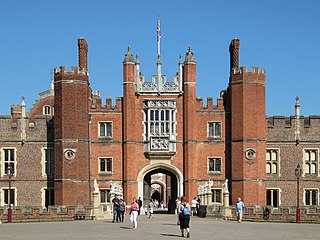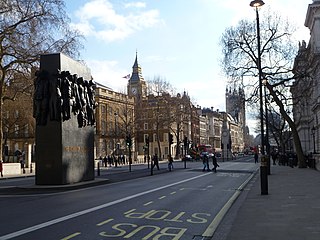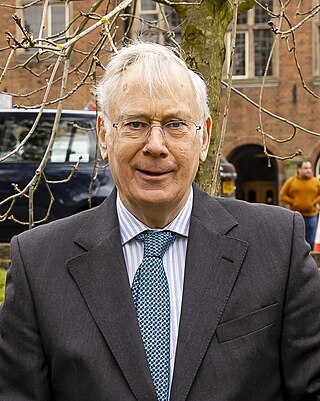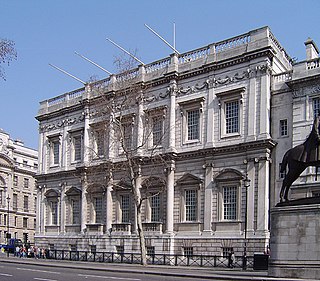Simon Thurley | |
|---|---|
| Chief Executive Officer of English Heritage | |
| In office 2002–2015 | |
| Succeeded by | Kate Mavor |
| Personal details | |
| Born | Simon John Thurley 29 August 1962 Huntingdon,Cambridgeshire,England |
| Citizenship | United Kingdom |
| Spouses | |
| Children | 2 |
| Education | Kimbolton School |
| Alma mater | Bedford College, University of London Courtauld Institute of Art University of Bath |
Simon John Thurley, CBE , FSA , FRIBA , FRHistS (born 29 August 1962) is an English academic and architectural historian. He served as Chief Executive of English Heritage from April 2002 to May 2015. In April 2021, he became Chair of the National Lottery Heritage Fund.
Thurley was born in Huntingdon and grew up in Godmanchester. He feels that it was inevitable he became a historian since "by age seven I was helping out at Roman digs near my home ... and childhood holidays invariably involved ticking off stately homes and cathedrals". [1] He attended Kimbolton School in Cambridgeshire (1972–82), before leaving to study for a BA degree in History at Bedford College (1982–85).
He passed with a 2:1, and continued his studies at the Courtauld Institute of Art (1985–89). There he gained a distinction for an MA degree in Art History, and obtained a PhD degree with the thesis entitled "English Royal Palaces 1450–1550". [2] In 2010 he was awarded an Honorary LLD degree by the University of Bath.
Whilst working on his doctoral research, he took up a post as Inspector of Ancient Monuments for English Heritage (1988–90), later becoming Curator of Historic Royal Palaces (1989–97) and director of the Museum of London (1997 to March 2002). He is also a prolific history broadcaster, presenting a history slot on BBC London for three years and – in television – presenting Flying Through Time, Channel Four's 2004 six-part series Lost Buildings of Britain (Channel 4), The Buildings that Shaped Britain (Channel 5) and a six-part history of London (Granada). [2] He also appeared as an expert in a number of episodes of the long-running Channel 4 archaeological programme Time Team .
In 2002, at the age of 39, Thurley was appointed Chief Executive of English Heritage; his relative youth at taking this post led him to be dubbed a "boy wonder". [3] Thurley was the highest-paid member of English Heritage's staff: his emoluments in 2009 totalled £163,000, comprising a basic salary of £136,000 and a performance-related award of £27,000, twenty per cent of basic salary. [4]
Thurley married Katharine Goodison (born 1963), a lawyer-turned-hat-designer and daughter of Sir Nicholas Goodison (former Stock Exchange chairman). They divorced in 2007. His late father, a veterinarian, was born and raised in British India, and returned to England in the 1950s some years after India's independence in 1947.
Thurley married secondly Anna Keay (born 1974), a fellow historian, in February 2008. She was the Properties Presentation Director for English Heritage from 2002 to 2011, and is now Director of the Landmark Trust. [5] They had known each other for about 15 years, but got to know each other better when they worked on a documentary called The Buildings That Shaped Britain for Channel 5 in 2006. They live in London and a medieval merchant's house in King's Lynn, Norfolk, and have two children.[ citation needed ]
He was appointed Commander of the Order of the British Empire (CBE) in the 2011 Birthday Honours for services to conservation. [6] [7]

Hampton Court Palace is a Grade I listed royal palace in the London Borough of Richmond upon Thames, 12 miles southwest and upstream of central London on the River Thames.

Whitehall is a road and area in the City of Westminster, Central London, England. The road forms the first part of the A3212 road from Trafalgar Square to Chelsea. It is the main thoroughfare running south from Trafalgar Square towards Parliament Square. The street is recognised as the centre of the Government of the United Kingdom and is lined with numerous departments and ministries, including the Ministry of Defence, Horse Guards and the Cabinet Office. Consequently, the name "Whitehall" is used as a metonym for the British civil service and government, and as the geographic name for the surrounding area.

Inigo Jones was the first significant architect in England and Wales in the early modern period, and the first to employ Vitruvian rules of proportion and symmetry in his buildings. As the most notable architect in England and Wales, Jones was the first person to introduce the classical architecture of Rome and the Italian Renaissance to Britain. He left his mark on London by his design of single buildings, such as the Queen's House which is the first building in England designed in a pure classical style, and the Banqueting House, Whitehall, as well as the layout for Covent Garden square which became a model for future developments in the West End. He made major contributions to stage design by his work as a theatrical designer for several dozen masques, most by royal command and many in collaboration with Ben Jonson.

Prince Richard, Duke of Gloucester, is a member of the British royal family. He is the second son of Prince Henry, Duke of Gloucester, and Princess Alice, Duchess of Gloucester, and the youngest of the nine grandchildren of King George V and Queen Mary. He is 31st in the line of succession to the British throne, and the highest person on the list who is not a descendant of George VI, who was his uncle. At the time of his birth, he was 5th in line to the throne.

The Palace of Whitehall – also spelled White Hall – at Westminster was the main residence of the English monarchs from 1530 until 1698, when most of its structures, with the notable exception of Inigo Jones's Banqueting House of 1622, were destroyed by fire. Henry VIII moved the royal residence to White Hall after the old royal apartments at the nearby Palace of Westminster were themselves destroyed by fire. Although the Whitehall palace has not survived, the area where it was located is still called Whitehall and has remained a centre of the British government.

St James's Palace is the most senior royal palace in London, the capital of the United Kingdom. The palace gives its name to the Court of St James's, which is the monarch's royal court, and is located in the City of Westminster in London. Although no longer the principal residence of the monarch, it is the ceremonial meeting place of the Accession Council, the office of the Marshal of the Diplomatic Corps, and the London residence of several members of the royal family.

The Imperial State Crown is one of the Crown Jewels of the United Kingdom and symbolises the sovereignty of the British monarch. It has existed in various forms since the 15th century. The 1937 version is worn by a new monarch for the first time in the royal procession following their coronation and subsequently used at State Openings of Parliament. The crown is adorned with 2,901 precious stones, including the Cullinan II diamond, St Edward's Sapphire, the Stuart Sapphire, and the Black Prince's Ruby.

Somerset House is a large Neoclassical complex situated on the south side of the Strand in central London, overlooking the River Thames, just east of Waterloo Bridge. The Georgian era quadrangle was built on the site of a Tudor palace originally belonging to the Duke of Somerset. The present Somerset House was designed by Sir William Chambers, begun in 1776, and was further extended with Victorian era outer wings to the east and west in 1831 and 1856 respectively. The site of Somerset House stood directly on the River Thames until the Victoria Embankment parkway was built in the late 1860s.

Oatlands Palace is a former Tudor and Stuart royal palace which took the place of the former manor of the village of Oatlands near Weybridge, Surrey. Little remains of the original building, so excavations of the palace took place in 1964 to rediscover its extent.
John Stanley Melville Keay FRGS is a British historian, journalist, radio presenter and lecturer specialising in popular histories of India, the Far East and China, often with a particular focus on their colonisation and exploration by Europeans. In particular, he is widely seen as a pre-eminent historian of British India. He is known both for stylistic flair and meticulous research into archival primary sources, including centuries-old unpublished sources.

The Banqueting House, on Whitehall in the City of Westminster, central London, is the grandest and best-known survivor of the architectural genre of banqueting houses, constructed for elaborate entertaining. It is the only large surviving component of the Palace of Whitehall, the residence of English monarchs from 1530 to 1698. The building is important in the history of English architecture as the first structure to be completed in the classical style of Palladian architecture which was to transform English architecture.

Apethorpe Palace, formerly known as "Apethorpe Hall", is a Grade I listed country house, dating to the 15th century, close to Apethorpe, Northamptonshire. It was a "favourite royal residence" for James I.

Jonathan Foyle is an architectural historian, broadcaster and advocate for heritage sites. He is also an artist.

Lucy Worsley is a British historian, author, curator and television presenter. She is joint chief curator at Historic Royal Palaces but is best known as a presenter of BBC Television and Channel 5 series on historical topics.
Charles McKean FRSE FRSA FRHistS FRIBA was a Scottish historian, author and scholar.
Bridget Cherry is a British architectural historian who was series editor of the Pevsner Architectural Guides from 1971 until 2002, and is the author or co-author of several volumes in the series.
Anna Julia Keay (born August 1974 in the West Highlands of Scotland), is a British architectural historian, author and television personality and director of The Landmark Trust since 2012.
Samuel Perkins Pick was an English architect strongly associated with Leicestershire, and co-founder of the architecture and civil engineering firm Pick Everard.

Anne Home, Countess of Lauderdale (1612–1671) was a Scottish aristocrat.
Niccolo da Modena or Nicholas Bellin of Modena was an Italian artist and technician at the English court.